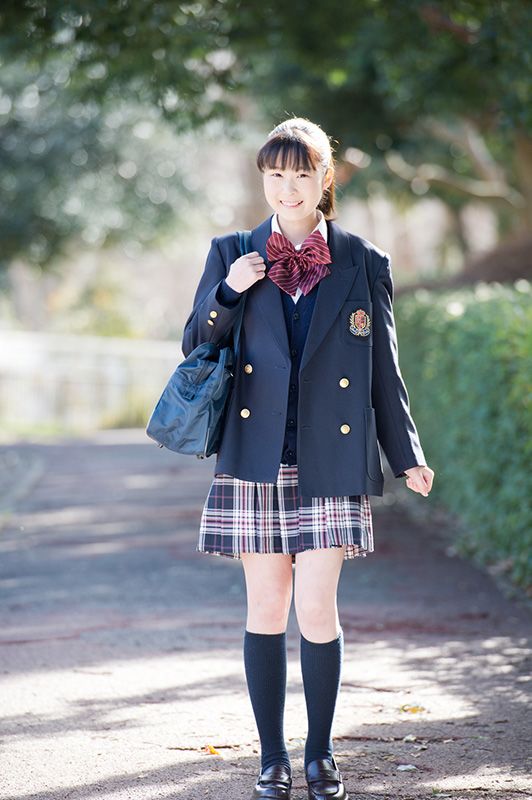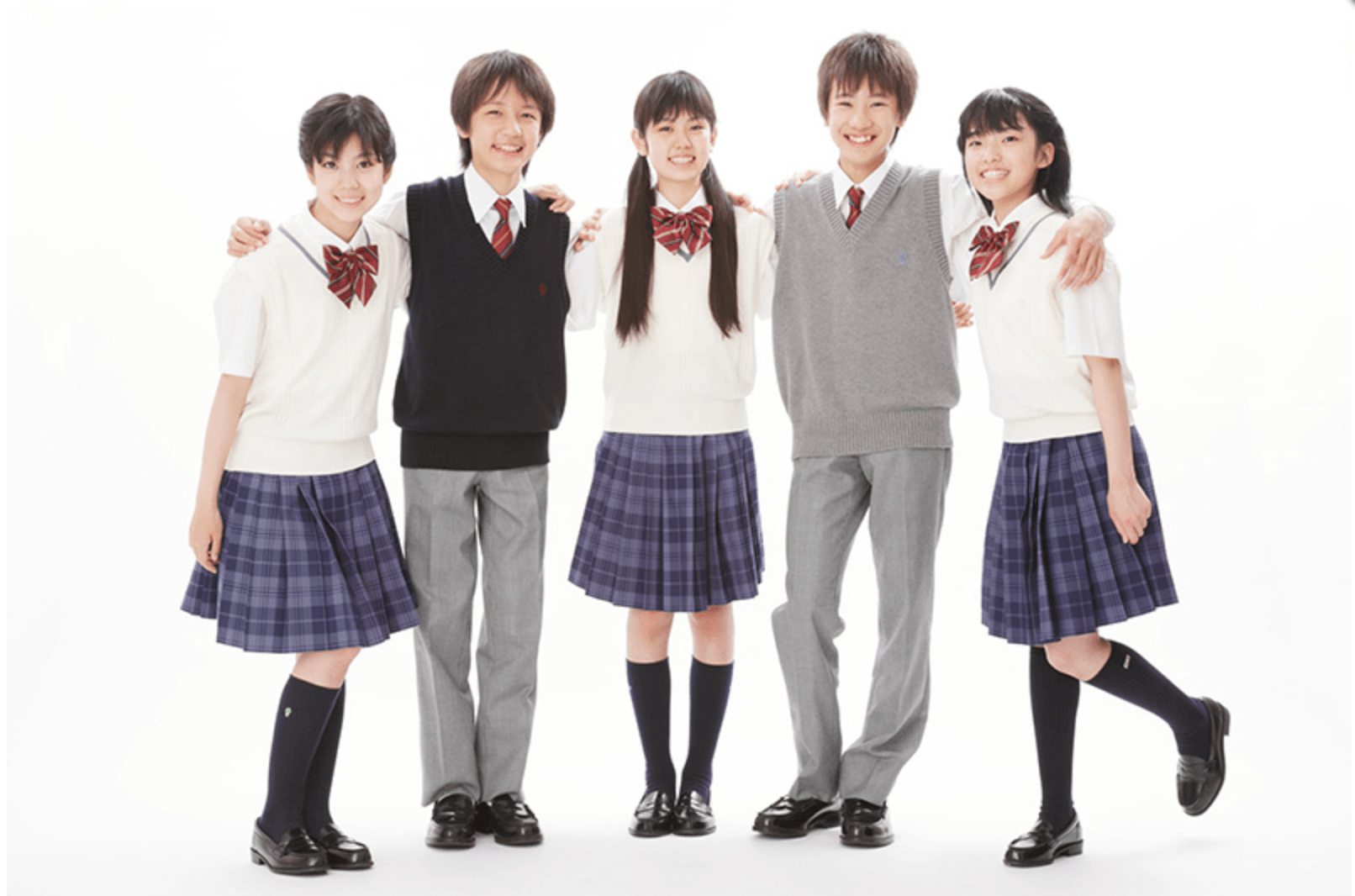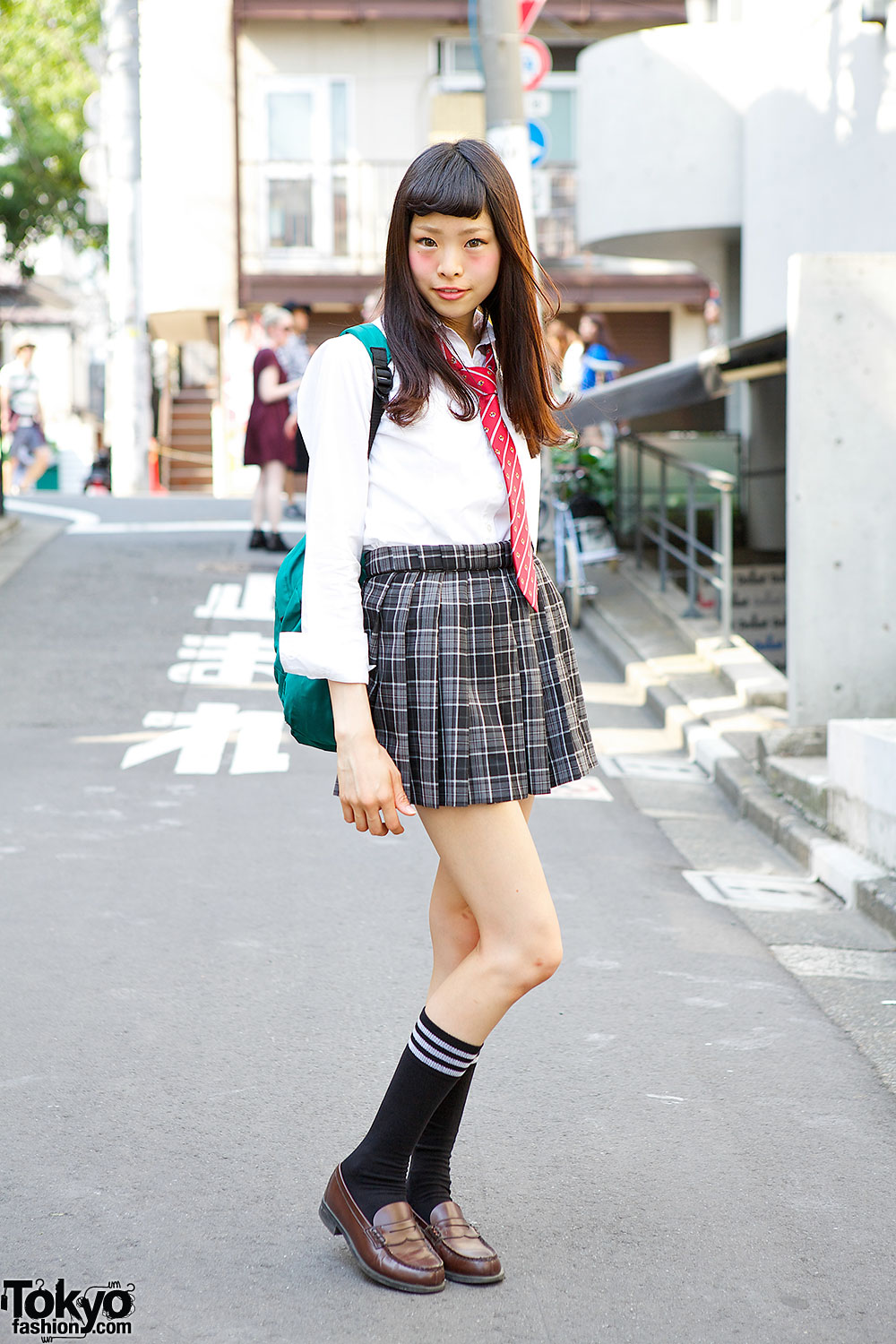When you think about Japan, so many iconic images probably come to mind, right? Perhaps cherry blossoms, maybe bustling cityscapes, or even delicious ramen. But, you know, for a lot of people, the distinctive look of Japanese school uniforms is also very, very high on that list. These outfits, they're pretty much a visual shorthand for students across the country, and in some respects, they've really captured the imagination of folks all over the world. They're not just something kids wear to school; they're actually a really interesting part of Japan's culture and its educational journey, you know?
Today, school uniforms are common in many Japanese public and private schools. It's like, nearly every student you see, whether they're at a public institution or a private one, more or less wears one. This widespread use really shows how deeply ingrained these outfits are in the daily lives of young people there. So, it's a very familiar sight, from the big cities to smaller towns, pretty much everywhere you look, you'll see students dressed in these specific ways, which is rather interesting.
These uniforms, which are called "seifuku" (制服) in Japanese, were first brought into Japanese private and public schools quite a while ago, way back in the late 19th century. So, they have a pretty long history, you see. In recent years, these Japanese school uniforms have been gaining quite a lot of attention overseas, and are a main element which symbolizes Japanese students and pupils. They’ve become, in a way, a very recognizable symbol that represents young people from Japan to the wider world, which is kind of cool, don't you think?
Table of Contents
- What Makes Japanese School Uniforms So Special?
- The Journey Through Time: How Japanese School Uniforms Evolved
- Why Do Styles Differ So Much?
- Japanese School Uniforms Around the World
- Frequently Asked Questions About Japanese School Uniforms
What Makes Japanese School Uniforms So Special?
Japanese school uniforms are, you know, more than just outfits that students put on each day. They’re a symbol of tradition, discipline, and identity, which is pretty significant. This means they carry a lot of meaning, kind of representing what it means to be a student in Japan. So, they're not just about looking neat; they also stand for certain values that are very important in the school system, you see.
The very look of these uniforms is known for its fashionable appearance. They really do have a style that people find appealing, both inside Japan and, as a matter of fact, elsewhere too. Most schools in Japan have their own specific uniforms, and the design varies depending on the school, which is actually quite interesting. So, you won't see the exact same uniform everywhere; each school gets to put its own stamp on what its students wear, which adds a lot of variety, you know.
A Symbol Beyond Just Clothes
When we talk about Japanese school uniforms, we're really talking about something that goes way beyond just the fabric and the stitching. These outfits are, in a way, deeply connected to the country’s educational system and its broader culture. They are, quite literally, one of the most iconic symbols of both these things, you know, which is pretty powerful.
They blend tradition with modern elements, so they’re known for their classic designs that somehow manage to feel current too. It’s like they take something old and make it feel new, which is a neat trick. This mix of old and new makes them really interesting to look at, and it also shows how Japan often balances its rich history with newer ideas, which is something you see a lot, actually.
So, the uniform itself is a sort of visual cue, telling you a bit about the school and its values. It helps to create a sense of belonging among students, too, which is very important. When everyone wears something similar, it can really help build a feeling of community and shared purpose, you know, which is quite a good thing for a school to have.
Fashionable and Practical Designs
One of the cool things about Japanese school uniforms is that they are both fashionable and practical, which is a pretty good combination, honestly. You know, they're not just about looking good; they're also designed to be worn every day by students who are active and busy. This means they need to hold up well and be comfortable, which they generally are.
From anime staples like sailor suits and gakuran to modern versions with blazers and, you know, other contemporary touches, there's a lot of variety in how they look. This range of styles means that while they're all uniforms, they don't all look the same, which is rather nice. You might see a very traditional sailor suit in one school, and then a sleek blazer and plaid skirt in another, which shows how much they can differ, you see.
The distinctive, traditional outfits were originally inspired by military designs, which is a bit of history that's quite fascinating. But since the 1980s, new styles have emerged, showing that these uniforms are not stuck in the past. They've actually changed quite a bit over the years, adapting to newer fashion trends and student preferences, which is really something. This evolution is why they remain so relevant and, frankly, so interesting to people today, you know.
The Journey Through Time: How Japanese School Uniforms Evolved
The story of Japanese school uniforms is, in a way, a story of change and adaptation. They didn't just appear overnight looking the way they do now. Instead, they have a pretty rich history that shows how they've grown and shifted over many decades. So, understanding their journey through time helps us see why they are what they are today, which is quite insightful, you know.
The usage of school uniforms in Japan, as we know it, really began to take shape in the late 19th century. This was a time when Japan was undergoing a lot of changes, looking to Western models for many things, including education. So, the idea of uniforms came in during this period of transformation, which is a key piece of their history, actually.
Early Beginnings: Military Roots
The very first versions of Japanese school uniforms were, in fact, quite different from what you might picture today. The distinctive, traditional outfits were originally inspired by military designs, which is a pretty clear influence if you look at older photos. This makes a lot of sense, you know, given the era they were introduced.
These early designs were about promoting discipline and a sense of order among students, much like military attire aims to do. The idea was to create a uniform look that fostered a feeling of unity and seriousness in the educational setting. So, it wasn't just about clothes; it was about shaping behavior and attitude, which is quite a significant purpose for an outfit, really.
The military influence meant sturdy fabrics and practical cuts, designed for daily wear and to convey a certain image. This foundation laid the groundwork for what would become the widely recognized Japanese school uniform styles later on. It's almost like they started with a very clear purpose, and then built on that, you know, over time.
The Rise of Iconic Styles: Seifuku and Gakuran
As time went on, specific styles began to emerge that became truly iconic. The Japanese word for the sailor style of uniform is "seifuku," and this particular look became incredibly popular, especially for girls. It's a very recognizable design, with its distinct collar and tie, which is pretty much famous now.
For boys, the "gakuran" became the standard. This is a dark, stand-collar jacket, often with matching trousers, that gives a very neat and formal appearance. Both the seifuku and the gakuran became staples, you know, instantly recognizable as Japanese school uniforms. They really defined the look of students for many, many decades, which is quite a long run for any fashion, honestly.
These styles, while rooted in practicality and discipline, also started to gain a certain charm and appeal. They became associated with youth and school life, and in a way, they started to take on a life of their own beyond just being functional clothes. So, they evolved into something more than just uniforms; they became cultural symbols, too, you know.
Modern Twists and Endless Variety
But why do schools have different styles, and how have uniforms evolved? Well, since the 1980s, new styles have emerged, moving beyond just the classic sailor suits and gakuran. This period saw a lot of innovation in uniform design, which is pretty cool. Schools started to experiment with different looks, reflecting broader fashion trends and perhaps a desire for a fresher image, you see.
Today, school uniforms come in a variety of styles, from khakis and polos to tartan to shockingly bright combinations and the Japanese uniform's distinctive style. It's really quite a range, honestly. You might see a school with a very traditional look, and then another with something much more contemporary, like blazers and vests, which is quite a contrast.
These modern versions with blazers and, you know, other updated elements show that the concept of the uniform isn't static. It's something that continues to change and adapt. This evolution means that Japanese school uniforms are so interesting due to their different styles. There's always something new to see, and each school's uniform tells a bit of its own story, which is pretty neat.
Why Do Styles Differ So Much?
It's a fair question, really: why do school uniforms in Japan have such different styles? You'd think, you know, if they're all uniforms, they might look more similar across the board. But that's actually not the case at all. The variety is, in fact, one of the things that makes them so fascinating, you see.
The answer, in part, lies in the fact that most schools in Japan have their own uniforms, and the design varies depending on the school. This means that each institution gets to decide what its students will wear, which leads to a lot of creative freedom within the uniform concept. So, it's not a one-size-fits-all approach across the entire country, which is rather unique.
School Identity and Local Flavor
A big reason for the differing styles is that a school's uniform often serves as a key part of its identity. It's like a visual brand for the institution, you know? A school might choose a specific design to reflect its history, its values, or even its location. So, a very old, traditional school might opt for a classic look, while a newer, more modern school might go for something very sleek and contemporary, which makes sense.
The design choices can also reflect local preferences or even the climate of a particular region. For example, schools in colder areas might have uniforms with heavier fabrics or more layering options, while those in warmer places might choose lighter materials. So, there's a practical side to the variations too, which is quite clever, actually.
This means that each uniform, in a way, tells a story about the school it belongs to. It's a subtle but very powerful way for schools to distinguish themselves and for students to feel a connection to their specific place of learning. It creates a sense of pride, too, you know, which is a good thing for students.
The Influence of Pop Culture
Another reason for the diverse styles, and perhaps one that gets a lot of attention overseas, is the influence of pop culture. Japanese school uniforms are, you know, so often seen in anime, manga, and other forms of entertainment. These portrayals often highlight the fashionable aspects of the uniforms, and sometimes even create new trends that schools might pick up on.
From anime staples like sailor suits and gakuran to modern versions with blazers and, you know, all sorts of accessories, these outfits are everywhere in popular media. This exposure helps to keep the uniforms feeling fresh and relevant, and it also shows how they're seen as fashionable items, not just strict dress codes. So, there's a clear link between what you see in fiction and what you see in real life, which is pretty cool.
The fact that they are seen as both fashionable and practical in these fictional worlds also helps to reinforce their appeal in the real world. It's a cycle, really, where the uniforms inspire pop culture, and then pop culture, in turn, influences the evolution of the uniforms themselves. This constant interplay is what keeps them so interesting and varied, you know, year after year.
Japanese School Uniforms Around the World
In recent years, Japanese school uniforms have been gaining attention overseas, and are a main element which symbolizes Japanese students and pupils. This global interest is, you know, really quite remarkable. People from all over the world are fascinated by these distinctive outfits, which is something you might not expect from school wear, honestly.
They’ve become, in a way, a very recognizable symbol that represents young people from Japan to the wider world. This is partly due to the popularity of Japanese media, like anime and manga, where these uniforms are often featured prominently. So, if you've watched a lot of Japanese cartoons or read graphic novels, you've probably seen them a lot, which makes them very familiar, you see.
This attention means that the uniforms are not just a part of Japanese culture; they've become a part of global popular culture too. People admire their classic designs that blend tradition with modern touches, and they appreciate the way they represent a certain image of discipline and style. It's like they've transcended their original purpose and become something much bigger, which is quite something, really.
This widespread recognition helps to spread awareness of Japanese culture and its unique educational system. It's a visual shorthand that communicates a lot without needing any words. So, next time you see a Japanese school uniform, you know, you're looking at something that has a lot of history and a lot of global appeal, which is pretty neat. You can learn more about Japanese culture on our site, and to see more about student fashion trends, check out this page.
For more insights into the cultural significance of uniforms, you might want to explore resources like cultural-insights.org/japanese-uniforms, which can offer a broader view, you know, on how clothing shapes identity in different societies.
Frequently Asked Questions About Japanese School Uniforms
What are Japanese school uniforms called?
The Japanese word for the sailor style of uniform is "seifuku" (制服), and this term is also generally used to refer to Japanese school uniforms in general. So, if you hear someone say "seifuku," they're probably talking about the school uniform, you know, no matter the specific style. It's the common term for them, pretty much.
Why do most schools in Japan have uniforms?
Most schools in Japan have uniforms for their students because they are seen as a symbol of tradition, discipline, and identity. The uniforms help to foster a sense of unity among students and can reduce social disparities based on clothing choices. So, they serve a lot of purposes beyond just dressing students, which is pretty interesting, actually.
How have Japanese school uniforms changed over time?
Japanese school uniforms, called seifuku (制服), were introduced to Japanese private and public schools in the late 19th century, originally inspired by military designs. Since the 1980s, new styles have emerged, moving beyond the classic sailor suits and gakuran to include modern versions with blazers and a variety of other designs. So, they've really evolved quite a bit, you know, blending tradition with modern fashion, which is pretty cool.



Detail Author:
- Name : Mr. Elwin Kuphal II
- Username : ted.wolff
- Email : spinka.lazaro@bergstrom.biz
- Birthdate : 1978-07-22
- Address : 5922 Paxton Pike Suite 903 New Leannton, OR 71172-3771
- Phone : 505.674.7871
- Company : McCullough PLC
- Job : Manager
- Bio : Dolores labore qui non consequatur blanditiis. Velit nihil quia et. Eos harum qui voluptatem eligendi quo non rerum. Iusto unde aspernatur enim tempore saepe. Modi sit occaecati ut omnis earum.
Socials
instagram:
- url : https://instagram.com/jenkins2001
- username : jenkins2001
- bio : Minima voluptatem eaque et ex eos sit aut non. Velit ut aut enim nesciunt nihil et ipsa.
- followers : 5511
- following : 1534
facebook:
- url : https://facebook.com/djenkins
- username : djenkins
- bio : Nostrum pariatur magnam eum quae alias culpa eaque.
- followers : 1771
- following : 1239
twitter:
- url : https://twitter.com/devyn.jenkins
- username : devyn.jenkins
- bio : Hic est illum harum qui quasi id sed possimus. Modi ipsa quis atque inventore architecto.
- followers : 3190
- following : 1067
tiktok:
- url : https://tiktok.com/@jenkinsd
- username : jenkinsd
- bio : Sunt amet architecto esse iure ea voluptatem dolor.
- followers : 5500
- following : 2108



























